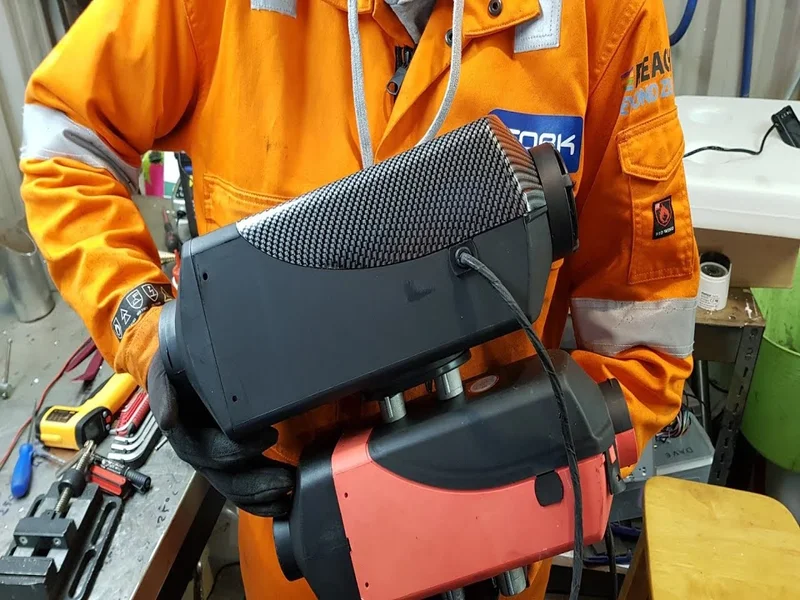There are lots of things you’ve probably dreamed about upgrading, changing, or modifying after buying your RV.
The odds are pretty good that the RV sewer hose you use to drain your gray and black water tanks wasn’t a high priority on that list.
At the same time, though, making sure that the RV sewer hose you have stowed away is ready to use every time your tanks need to be drained is high quality and the proper length is a huge piece of the puzzle to successfully maintaining this vehicle.
Let’s dig into how long your RV sewer hose should be (and more) right now.
How Long Should an RV Sewer Hose Be?
A lot of new RV owners figure that they should hunt for an RV sewer hose that is only about as long as absolutely necessary and not even an inch longer.
Many of them believe that the shorter the sewer hose the happier they are going to be. It’s not unreasonable. It’s not hard to see why they think that.
In reality, though, a shorter hose is often going to be a real nightmare to deal with – even if it is a whole lot easier to stowaway and haul.
At the end of the day, you want your RV hose to be at least 20 feet long (if not longer). This gives you plenty of room to maneuver your hose as necessary but isn’t so long that you don’t have anywhere to stow it in your vehicle.
Let’s go over a couple of things you want to think about before you buy a new RV sewer hose.
Twenty Feet of Hose Should Do – But Another Ten Feet Won’t Hurt, Either!
According to the folks at both the National Association of RV Parks and Campgrounds and the National RV Owners Association a 20 foot sewer hose is going to be more than enough to tackle 90% of all the situations you’re going to find yourself in.
Black water tanks in specific might need a little extra length to get to dumping systems that are separated from graywater systems. Dumping locations frequently step these back away from the graywater system, guaranteeing that cross-contamination issues happen a lot less frequently than they would have.
But that’s why those two organizations (as well as seasoned RV travelers) recommend keeping a separate 10 foot hose on top of your 20 foot hose to guarantee that you have plenty of room to run.
If you really want to cover all of your bases make sure that you have 20 feet of hose (at least), with another 10 or 15 feet ready to rock and roll.
How to Find the Best RV Sewer Hose For Your Needs
Now that we have that out-of-the-way, it’s important to go over a couple of things you won’t think about before buying a new RV sewer hose.
Choosing the Right Size Hose Length
As recommended earlier, you’ll want at least 20 feet of hose on hand – and then it’s a good idea to have another 10 feet of hose (or maybe even another 15 feet) to give yourself a little buffer.
Some RV owners, though, like to go with multiple 15 foot lengths of hose – sometimes stowing four individual sections that are 15 feet long for a grand total of 60 feet of sewer hose ready to go.
That might be overkill for the kinds of RV parks and dumping stations you anticipate visiting. But the first time you need an extra length of hose that you don’t have will be the last time that you go without the “overkill” lengths!
Stick with either a 20-foot section of hose as your “main workhorse” and another 10 or 15 feet or get multiple 15 feet lengths of hose that you can snap together as necessary.
What is the rv sewer hose diameter?
Don’t Worry About Diameter! One of the coolest things about the RV world (something kind of unique in this industry) is that all of the individual manufacturers have pretty much agreed with keeping the same size.
RV sewer hoses, pipes, bayonet connections, and twist-and-lock type fittings are universal and are 3-inch in diameter. This is the universal diameter and is the same size for most RVs.
The sewer hose diameter was pegged at 3 inches across the board. This is great news for folks that are looking to buy or upgrade their RV sewer hose set up.
You’re not going to have to worry about fumbling around with different lengths and different hoses anymore. Pretty much every sewer hose specifically designed with RVs in mind is going to be 3 inches in diameter – and almost all of them can be coupled with one another because of that without a lot of headache or hassle.
A handful of Airstream trailers on the market use unique Thetford fittings and have wild diameters. But even most of them (especially the more modern units) have switched over to the three-inch universal diameter.
Don’t sweat that when you’re making your purchase.
Most RV Sewer Hoses Have Universal Mounting and Attachment Systems, Too
Another big benefit of keeping everything 3-inch diameter is that the mounting system and the attachment systems that connect hoses to your RV, one another, and dumping stations are all pretty universal and work across the board.
If you are bumping into fittings that just don’t want to connect with one another it’s not hard to find adapters, either.
This is huge, but you want to make sure that you “test fit” all of your components together and then run a bit of clean water through the system to make sure you’re good to go.
It’ll help give you a lot more peace of mind when you roll down the road, knowing that your sewer system is going to connect and function without leaks and without problems caused by different hoses getting linked up together.
Buy a Hose with a Good Warranty
Finally, it’s always important to make sure that you’ve invested in a sewer hose from a company you know you can trust.
There are a bunch of companies in the space that make wonderful products, but some of them have better warranties than others.
If you want to be sure that your investment in quality RV sewer system components is exactly that – and investment in your vehicle, your time, and your energy spent maintaining your RV – you’ll want to spring for hoses with quality warranties.
There’s nothing better than knowing that no matter what happens you aren’t going to have wasted your money on such a core RV component like this thanks to a great warranty that backs everything up.








